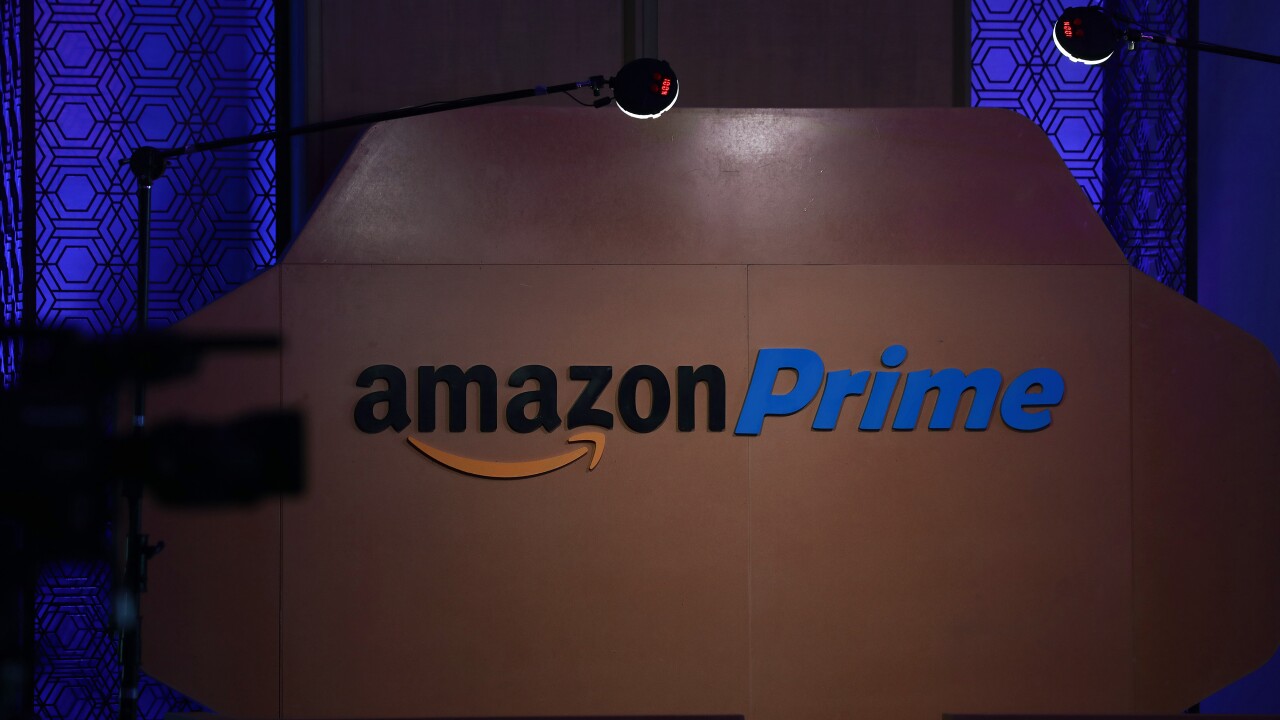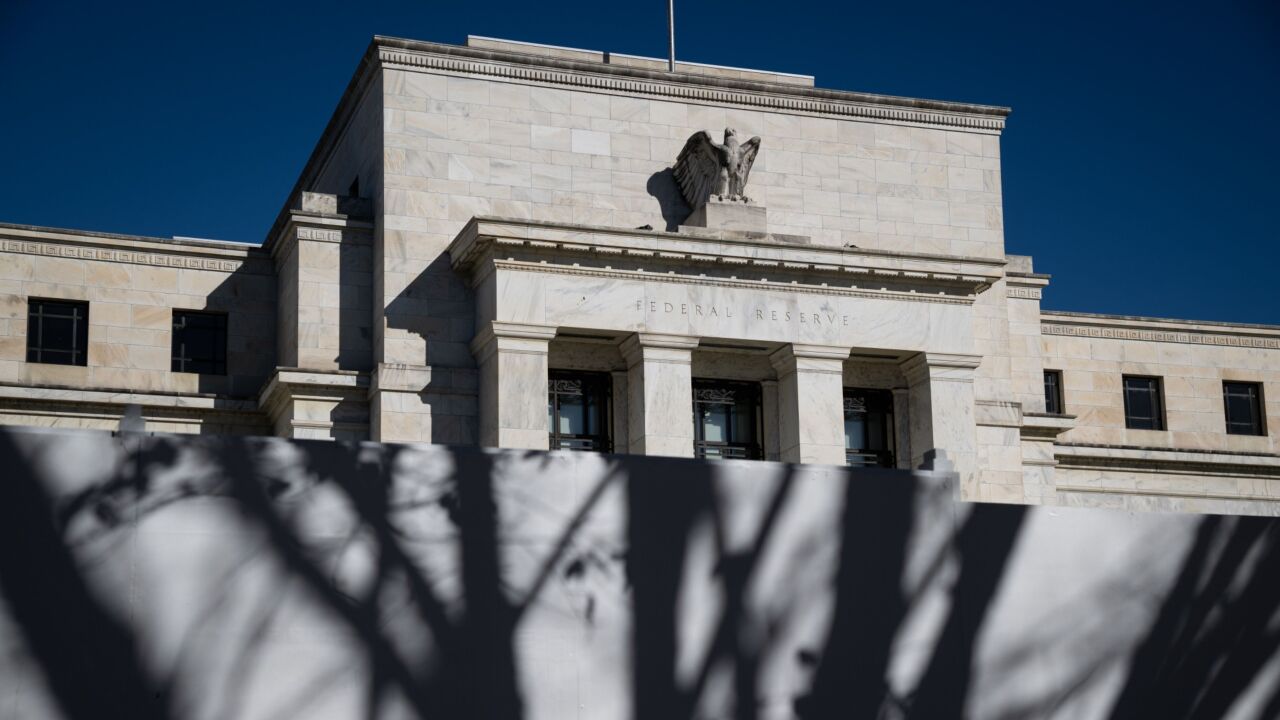As is often the case, it is the guys in the middle that get squeezed the hardest. That seems to be the case with regard to recent changes in Visa USA's chargeback-monitoring program, which is expected to have its greatest effect on Internet merchants.
The larger, experienced retailers that conduct sales online shouldn't be affected much by a change in how Visa determines which merchants face penalties for having too many chargebacks. And those retailers that do very little business online might actually get some relief.
But the mid-sized and high-risk retailers are likely to begin scrambling to find ways to get around Visa's new ruling-and many of their actions may not have the desired effect of actually reducing chargebacks.
In a move that Visa executives say will simplify the monitoring program and reduce the number of merchants who are penalized, Visa will now impose penalties on merchant acquirers whose monthly chargebacks total or exceed 100 and equal 1% of all transactions for four months. That compares to a previous policy that set the minimum at 50 with a four-month average at 2.5% for all chargebacks.
But industry experts say the big, established online retailers shouldn't be hit too hard by the change. Most have employed sophisticated anti-fraud programs that keep their chargebacks well below the 1% threshold.
And Visa's previous policy was more complicated so that while the total percentage before penalties were involved fell at 2.5%, it also required that "customer disputes" be kept at under 1%. Because customer disputes make up the majority of chargebacks-the remainder being cases where sales were misfiled or there was a technical error-that is the number that most large retailers strove to stay under anyway.
Meanwhile, Visa expects that by raising the minimum number from 50 to 100, it can cut the number of merchants that are subject to penalties by 45%. According to a Visa spokesperson, Visa is making the changes in response to opinions from its merchant acquirers, who are directly responsible for enforcing chargeback rules.
"We were finding the two thresholds were too complicated, according to our acquirers, and frankly cast too wide a net due to technical or system issues," the spokesperson told CCM sister publication CardLine in September. "By changing the threshold to 1% and increasing the number of chargebacks to 100, we were able to streamline the program and focus our efforts on more problematic merchants."
Once a merchant is identified for placement in the monitoring program, the responsible acquirer must work with that merchant to reduce chargebacks. If not, Visa may fine the acquirer or ultimately discontinue the merchant's Visa-accepting status. The spokesperson wouldn't disclose the range of fines. Visa is reducing the time to correct problems from 14 months to 10 months, though the spokesperson says most merchants already are resolving chargeback issues within 60 days.
Currently, only "30 to 40" of Visa's 5 million U.S. merchants are in the program, according to the spokesperson, and Visa expects the new thresholds could reduce that number by 45%. About half of the current monitored merchants are Internet merchants while the others are of the bricks-and-mortar variety.
Visa's chargebacks declined by 21% in 2002, resulting in total estimated savings of $238 million, according to the spokesperson. Visa attributes the decline to efforts to streamline chargeback processing as well as newer technologies and services aimed at keeping risky sales out of the Visa network.
Industry experts say the anticipated reduction of merchants in the chargeback penalty box will come as the result of small merchants that don't generate many chargebacks.
"The small merchants never really caused a lot of trouble for Visa, because even if they were above 2.5%, they didn't add up to much," says Avivah Litan, a research analyst for Stamford, Conn.-based Gartner Group. "Visa has spent most of its real efforts on getting the large retailers to reduce their chargeback rates because that's what counts."
Source of Problems
Still, Gartner's research indicates that the industry average for chargebacks is at about 1.14%, just above Visa's minimum. If the large players are staying well below 1% and the little players don't account for much, who is raising the industry average? The mid-sized players and those retailers in high-risk businesses, such as adult entertainment, health products and digital content, seem to be the biggest culprits.
Many small and mid-sized retailers often either don't have the scale to employ high-priced risk-management tools or their businesses simply lend themselves to a large number of customer disputes. To get their numbers below 1%, they may have to take extreme measures. Among the actions suggested are cutting off all or selected foreign sales, moving their businesses offshore with foreign banks, promoting automated clearinghouse (ACH) debit transactions over credit and even setting up multiple merchant accounts.
The fastest way, but not always the best in terms of business strategy, to get a sharp reduction in chargebacks is to cut off foreign sales, at least to those countries where fraud is known to be high. Retailers and fraud experts agree that the chargeback and fraud rates from foreign sales are much higher compared with the U.S. Some Eastern European and Asian countries have averages above 10%.
But curtailing foreign sales altogether may mean a huge loss of existing or potential business.
"There are retailers that can drop their chargebacks by up to 15% by just cutting off sales to certain countries," says Jeff Foster, executive vice president of Retail Decisions, a United Kingdom-based firm that provides merchants with anti-fraud services and has its U.S. headquarters in Hazlet, N.J. "But that's not necessarily a good move because retailers will lose a lot of good business by arbitrarily declining sales."
Foster says he talked to one retailer that cut off all sales to Asia and to five European countries after getting word of the Visa rule change. The European countries included the U.K., whose chargeback rates are low by most standards but high enough to cause this retailer concern. By eliminating the high number of chargebacks from these countries, the retailer can get the total number of chargebacks from just above 1% to below, Foster says.
'Nature of Their Business'
Visa's new policy casts an even brighter spotlight on the issue of rejecting legitimate sales in order to prevent fraud and chargebacks ("Throwing Out the Good With the Bad," July). "A good-size retailer can lose a $50 million book of business by doing that," Foster says. "You're walking away from $47.5 million in good sales in order to eliminate $2.5 million in fraud."
In addition to cutting out foreign sales, some retailers are likely to automatically reject cards with bank identification numbers that fall within "a problem range" indicating that cards with similar numbers have had problems before, according to Foster. Again, this risks angering good customers.
Other ways to reduce chargebacks range from mere window-dressing to downright deviousness. Gene Lieb, principal and founder of Metawan, N.J.-based Business Financial Resources, works with high-risk Internet merchants to find them processors that can handle their special requirements. He says there are a lot of retailers that will have to focus on getting around the rules rather than really reducing chargebacks.
"There are retailers in certain categories-sellers of vitamin supplements, for example-that can't get their chargebacks down to 1% no matter what they do," he says. "It's the nature of their business. In many cases, when customers aren't satisfied with the product, they don't bother to ask for a refund, they just request a chargeback."
Offshore Accounts
One action Lieb thinks a lot of retailers will take to get around the Visa penalties is to open credit card accounts offshore. The Visa 1% limit affects only U.S.-based operations, although it includes sales that come from overseas. But the chargeback-monitoring policies for companies whose accounts reside offshore vary by geographic region. And credit card experts say that most policies outside the U.S. allow for higher chargeback averages-more in the 2.5% to 5% range.
Another action Lieb predicts retailers will take is to set up a secondary acquiring account. That way, chargebacks can be spread over two accounts and not reach the monthly limit.
"It's against Visa rules to set up multiple accounts, but there are retailers who get away with it," Lieb says.
Visa would not comment in detail about retailers skirting the rules, but says merchants should work with the association and its acquirers.
"The bigger issue is reducing chargebacks, not getting around the rules," says the Visa spokesperson.
Finally, and possibly a more ethical, tactic for retailers with chargeback problems, Lieb says, is to begin accepting and promoting ACH debit transactions. While early versions of such payment programs are still getting off the ground, Lieb believes the tightening of the chargeback limits could push more retailers into looking at the ACH. Such payments do not involve chargebacks and can be less expensive for retailers to accept than credit cards.
Not all retailers are likely to take such extreme measures. "The majority of the mainstream, well-run merchants will see the Visa announcement as a non-event," says John Shirey, group manager of product development for Dallas-based Paymentech, a merchant acquirer owned by Bank One Corp. and First Data Corp. that is one of the nation's largest processors of Internet credit card payments.
"The good merchants are well below 1% anyway," he says.
Vigilance
Although not revealing specific chargeback numbers for his portfolio, Shirey says his merchants have average chargeback rates that are closer to 0.5% than the 1.14% Gartner cites as an industry average. In fact, Shirey says most retailers have been quite vigilant about reducing chargebacks.
"Years ago, the chargeback limit for Internet purchases was 10% and then they lowered it to 5% and now we expect retailers to keep it below 1%," he says. "Visa has only been able to lower these limits because retailers have been so successful at getting the numbers down. Retailers don't want a lot of chargebacks anymore than anyone else. They don't want to have to go through all the headaches of dealing with them, forgetting any penalties from Visa."
Indeed, one online merchant, Ubid.com, a Chicago-based online auction service, says its rates are "significantly" below 1%.
"During the last couple years, there was probably only one month where we were over 1%. We've always been able to operate under the watch-list limit," says Eric Cerevic, senior fraud analyst.
Ubid employs the latest online fraud-detection technology and also does not accept offshore sales. Cerevic says the high volume of chargebacks coming from such sales was one factor that has kept Ubid from allowing them. He adds, however, that there are other regulatory and fulfillment issues that affected the decision.
And even large merchants that have been working under the 1% limit all along may find the new rules simply easier to follow. That would confirm one of Visa's reasons for the changes.
"This should be easier to administer and understand," says Wesley Wilhelm, business consulting manager for global fraud solutions at Fair Isaac Corp., the San Rafael, Calif.-based scoring and risk-management software developer. "I conduct a class for retailers on fraud control and I have to devote seven pages of my handout materials to just explaining the process. Hopefully, now I won't have to spend so much attention on explaining the rules and we can devote more time discussing solutions to the problem."
The Visa 1% limit also is closer to that required by MasterCard International, which says chargebacks must not exceed 1% of total transactions in each month for two consecutive months. MasterCard, however, also says chargeback dollar volumes should not exceed 2.5% of the total sales volume in each month for two consecutive months, according to Wilhelm.
Headaches
The transaction vs. dollar issue also is subject to debate. Gartner's Litan argues that the dollar volume should be the main criteria-not the transaction volume that Visa sets as its standard. She points out that some retailers may have few chargebacks, but if those chargebacks are for very large dollar volumes, it can be significant.
Wilhelm argues that both transaction volume and dollar volume need to be monitored. While a few large dollar volumes can cause trouble, a lot of small to mid-size transactions also can cause headaches because each one has to be researched and handled individually, he points out.
Regardless, some of the critics of Visa's rule change question whether the real motive was to get more retailers to sign up for the San Francisco-based association's Verified by Visa online security program. That program allows consumers to register through their card issuer and receive a password. When making a purchase at a participating merchant, the customer types in the password to authenticate his or her identity. Retailers that participate in the program are protected from chargeback liability on those transactions.
"You just have to think that lowering the limit on chargebacks might just be a tactic by Visa to get more retailers to sign up for Verified by Visa," says Retail Decisions' Foster. "Visa has tried everything else to get people to try Verified by Visa and it hasn't worked."
Litan agrees. "Verified by Visa has not gotten the adoption level that it had hoped for either from merchants or consumers," she says. "By raising the penalty bar, Visa might be hoping to get more merchants interested."
The Visa spokesperson says the rationale for VbyV is to reduce chargebacks, not promote a specific program. Visa says VbyV has 100 merchants.
Ubid, which was one of the retailers with which Visa piloted its program, describes it as a "mixed blessing." While Cerevic likes the protection from chargeback liability, there have been some problems. He says some participating issuers have not done a good job of updating their cardholder files and, as a result, good transactions get denied.
"We've had some customer complaints when the system doesn't work right," he says.
Rejected Sales
For example, customers who have recently moved have had sales rejected because their issuer did not update address information and the new address typed in did not match the one on file. Also, errors in ZIP codes-often just one numeral off-can result in a rejected transaction.
Despite these problems, Ubid intends to continue to participate in Verified by Visa and is considering joining a similar MasterCard program called SecureCard.
Both Litan and Foster say they've spoken to many retailers who are concerned that entering a password will slow down the order process and result in transaction abandonment-often an online merchant's greatest fear.
Paymentech's Shirey, however, believes in the online fraud-protection programs from Visa and MasterCard. While noting that acceptance is low, "these programs are in their infancy and it is really too early to tell how effective they'll be," he says. "Those participating are seeing a reduction in chargebacks, but it is all still way too early to tell how successful this will be."
-
The retail giants are kicking the tires on their own currencies. The potential prize is a way to reimagine prepaid cards and gain a key position as new forms of artificial intelligence-powered payments take off.
5h ago -
Primis Bank plans to sell an undisclosed amount of its 19% ownership stake in Panacea Financial, a digital-only lender focusing on medical professionals and veterinarians. The deal should yield $22 million.
5h ago -
The fintech and nonprofit join others, including AARP and the ICBA, in working to raise awareness of the financial risks of Alzheimer's and dementia.
5h ago -
The impact of President Trump's tariffs is the top concern for most middle-market American businesses, a new KeyBank survey found. But these firms also view the scrambled landscape as a chance to innovate and restructure.
5h ago -
The Federal Reserve Board banned a former relationship banker in Arkansas after he was caught stealing customer funds; Benchmark Federal Credit Union plans to merge with Franklin Mint Federal Credit Union to form a $2.1 billion-asset institution; Robin Vince, CEO of Bank of New York Mellon since 2022, has been elected chairman of the board; and more in this week's banking news roundup.
6h ago -
In USAA's battle with banks over mobile deposit technology, which it says it invented, a bank has scored a rare victory.
7h ago





